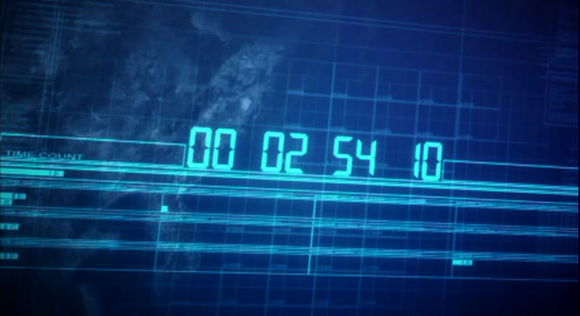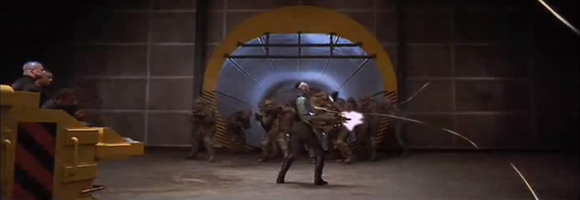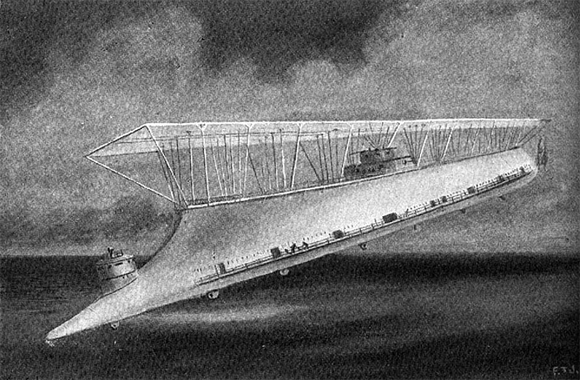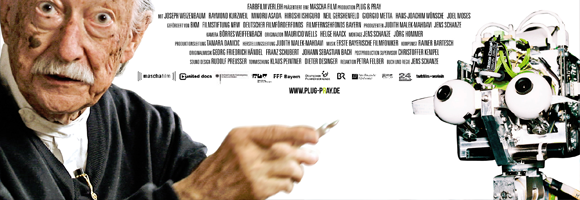
Just in case you think that I am not doing anything sensible—here’s my house in ↑Minecraft … quite a mad-scientist hideout, isn’t it?
radium age sf

While reading ↑Brian Aldiss‘ ‘Billion Year Spree: The True History of Science Fiction’ (1973) [a revised and expanded edition was published as ‘Trillion Year Spree’ (Aldiss & Wingrove 1986)] Joshua Glenn thought that Aldiss unfairly neglected the period from 1904 to 1933:
I’ve concluded that it’s an era of which science fiction historians and fans ought to be proud, not ashamed! I’ve dubbed this unfairly overlooked era ↑science fiction’s “Radium Age” because the phenomenon of radioactivity—the 1903 discovery that matter is neither solid nor still and is, at least in part, a state of energy, constantly in movement — is a fitting metaphor for the first decades of the 20th century, during which old scientific, religious, political, and social certainties were shattered. I’m on a crusade to redeem this era’s reputation; […] Join the crusade!
Well, I already did join and am proud that on my barely started ↵listing of cyberpunkish literature since the beginning there are three radium age titles: ‘The Iron Heel’ and ‘The Scarlet Plague’ by Jack London (1907 and 1910) and E. M. Forster’s ‘↵The Machine Stops‘ (1909). ‘The Scarlet Plague’ [which I haven’t read yet] is a favourite of Joshua’s, but he seems to have missed ‘The Iron Heel’ [with which I am halfway through]—highly recommended!
In order to convert all of you into radium-age believers I urge you to read ↑Joshua Glenn’s great essays. In his crusade Joshua goes well beyond just writing about the radium age:
I’ve enlisted two visionary bookfuturists (my HiLobrow colleague ↑Matthew Battles, and publisher ↑Richard Nash) and we’ve started ↑HiLoBooks. This year, we’re ↑serializing (at HiLobrow) and then publishing in paperback form six classics Radium Age science fiction titles. The first three—Jack London’s ↑The Scarlet Plague, Rudyard Kipling’s ↑With the Night Mail, and Arthur Conan Doyle’s ↑The Poison Belt—are coming out this spring; they are available for pre-ordering now. Join the crusade!
jet age machinery
With all the hype around information technology in all its guises as our times’ core technology, about virtual worlds and social media, Tim Heffernan’s ‘↑The machines that made the Jet Age‘ (a follow-up to his ‘↑Iron Giant‘ in the Atlantic) comes handy as a healthy reality check. Heffernan explains and stresses the role of gigantic forging presses as the machines that made the jet age possible. ‘This is the ↑story of the birth of the Jet Age—but it’s anchored firmly to the ground:’

Isn’t it a wonderful irony [pun not intended] that in order to make machines as light as possible you do need incredibly heavy machines. I think that steampunk and related æsthetics serve as reminders to the reality of heavy machinery and hardware in general.
plug & pray
Computer experts around the world, like Raymond Kurzweil and Hiroshi Ishiguro, strive towards the development of intelligent robots. Will man and machine merge as a single unity? Rejecting evolution’s biological shackles dangles the promise of eternal life for those bold enough to seize it. But Joseph Weizenbaum, a pioneer of the computer age, counter attacks against society’s limitless faith in the redemptive powers of technology. Filmed in the U.S.A., Japan, Germany, Italy.
Since antiquity, humankind has dreamed of creating intelligent machines. The invention of the computer and the breathtaking pace of technological progress appear to be bringing the realisation of this dream within our grasp. Scientists and engineers across the world, like Raymond Kurzweil and Hiroshi Ishiguro, are working on the development of intelligent robots, which are poised to become an integral part of all areas of human life. Robots are to do the housework, look after the children, care for the elderly… Yet, the ultimate vision goes even further, envisioning a merger of man and machine that will throw off the biological shackles of evolution and finally make eternal life a reality. The film delves into a world in which computer technology, robotics, biology, neuroscience, and developmental psychology merge. We visit the world’s leading experts in their laboratories in Japan, the USA, Italy and Germany. One of their very own, a pioneer of computer development and artificial intelligence, former MIT professor Joseph Weizenbaum, has become one of the harshest critics of those visions of technological omnipotence. He sees the widespread belief that nature can be entirely grasped by means of science and thus is computable as a disastrous aberration of human thinking. Weizenbaum, who created ELIZA, the world’s first speech recognition programme and mother of all chatbots, witnessed how, within only a few decades, computers have been entrusted with all kinds of tasks, even decision-making. Wary of unstinting devotion to progress, he keeps asking: Do we need all this? And what will it mean to be human in a world run by machines?
what counts down?
zeph’s pop culture quiz #15

As there were requests for more recent movies as the subject of the quiz, here you are: What does the countdown in the screencap indicate? What is expected to happen when it is at zero?
Just leave a comment with your educated guess—you can ask for additional hints, too. [Leaving a comment is easy; just click the ‘Leave a comment’ at the end of the post and fill in the form. If it’s the first time you post a comment, it will be held for moderation. But I am constantly checking, and once I’ve approved a comment, your next ones won’t be held, but published immediately by the system.]
UPDATE 1 (15 February 2012):
This week it again is fun, I have to say. First ryoku came out into the open and confessed that more information was needed—but he also had identified the Korean Peninsula in the screencap above. My follow-up hint was that you should concentrate on what is not on the map. Kueperpunk immediately realized that there is a drastic ‘lack of Sushi Bars,’ and yes, indeed: Japan is missing on the map! But why? And what does the countdown signify? It’s not ‘The Sinking of Japan’ and it’s not ‘The Final Countdown.’ Alexander Rabitsch dismissed his own guess, because ‘they had no such screens in 1980.’ Nevertheless he feels like within David Gilmour’s ‘Film Club’ and keeps on searching. To his question I had to answer that the movie is a Japanese anime. Here 風露 jumped in and guessed ‘Earth Maiden Arjuna,’ which it is not, sorry. We are not dealing with a TV series, but with a full-length feature film not based on a pre-existing manga. But it isn’t ‘Summer Wars’ either. Since his opening comment ryoku fell somewhat silent, but I think his search engines are running red hot meanwhile. For your comfort, here are two more screencaps:


UPDATE 2 and solution (16 February 2012):
Very nice, the riddle was solved in cooperation. First ↵came ryoku: ‘The movie is ↑Vexille, Japan isn’t visible because of some kind of energy field that covers all of Japan. Don’t have the actual answer though. Gotta go watch it and see about that timer for myself—and I don’t want to get spoiled :D’ And then ↵風露 did the rest: ‘Alright. In order to disable the electromagnetic barrier surrounding Japan, a satellite connection coming from inside Japan has to be established for at least 3 minutes. That’s what the countdown is for^^. As the barrier even blocks the visible range of electromagnetic waves, this is the only possible way to take a glimpse on what is really going on there. No further spoilers from now on ;)’ Congratulations, you two!
smart bulletts

The picture shows a cut-open smart bullett which homes in on a person’s individual unique heat pattern or signature. The screencap is from ‘↑Runaway,’ a 1984 cyberpunk flic directed by Michael Crichton, starring Tom Selleck and Kirstie Alley.

And this is a promotional picture of Sandia National Laboratories’ self-guided bullet prototype from a 30 January 2012 ↑press release. It’s not heat seeking, but a kind of miniature laser-guided rocket fired from small-caliber, smooth-bore firearms. Mr. Roboto over at ↑cyberpunkreview immediately remembered the bullett from the 1984 movie, when he saw Sandia’s prototype. Additionally he had the ↑fine idea that the MPAA now should sue Sandia Labs for copyright infringement. To complete the surreal cyberpunkish air of the story, here is a snippet from the press release:
‘Potential customers for the bullet include the military, law enforcement and recreational shooters.’
Well, I guess Jean-Baptiste Emanuel Zorg (Gary Oldman) of ‘↑The Fifth Element‘ (Besson 1997) fame although would try to sell weapons firing smart bulletts to everyone. Here is Zorg demonstrating the according capability of his product, the ZF-1:

amazing stories online

The first six issues (vol. 1 no. 1 through vol. 1 no. 6 [April to September 1926]) and the December 1926 (vol. 1 no. 9) issue of the legendary science fiction magazine Amazing Stories, edited by Hugo Gernsback, are—legally and for free—↓online at The Pulp Magazines Project!
cyberpunk shanghai

Canadian photographer ↑Greg Girard has a nice collection called ↑Phantom Shanghai online. Girard’s pictures perfectly catch the cyberpunk ambience and æsthetics and remind me very much of the photographies my pal ↑2R took in China years ago: ↵cyberpunk china and ↵more cyberpunk china.
See also Mike Doyle’s ↵abandoned homes.
cyberneticzoo

Reuben Hoggett’s ↑cyberneticzoo.com is a true treasure trove of the ‘history of cybernetic animals and early robots.’
hartmann the anarchist

‘↑Captain Nemo was a technical anarcho-terrorist.’ wrote Bruce Sterling (1991: 39) about the main protagonist of ↑Jules Verne‘s ‘↓20,000 leagues under the sea‘ (1870). The same can be said about the character Robur appearing in Verne’s ‘↓Robur the Conqueror‘ (1886) and its sequel ‘↓Master of the World‘ (1904). By way of his submarine ‘Nautilus’ Captain Nemo rules the oceans. Robur rules everything above through his vessels, the ‘Albatross’ and the ‘Terror.’ Just recently I learned that around the same time yet another literary ‘technical anarcho-terrorist’ appeared: ‘↓Hartmann the Anarchist‘ by Edward Douglas Fawcett (1893):
↑A sensational tale of the evil Mastermind of Nihilism destroying London and everything else he could get his grimy hands on. A typical ‘nineties tale of urban anxiety and the feeling of politics out of hand. The author (a Socialist—of a sort) gets to fly on the ATTILA, Hartmann’s aerial destroyer made of a specially hardened metal. Hartmann—a member of the professional classes gone bad because of the influence of a malign political theorist, aims to destroy the fabric of a rotten exploitative society stirs up the mobs beneath and watches from above.
The illustrations by Fred T. Jane very much convey the Jules-Verne-touch as you can see especially below. The illustration above is from the first page of the story’s serialization in The English Illustrated Magazine. With Guy Fawkes all around these days I found it apt.



